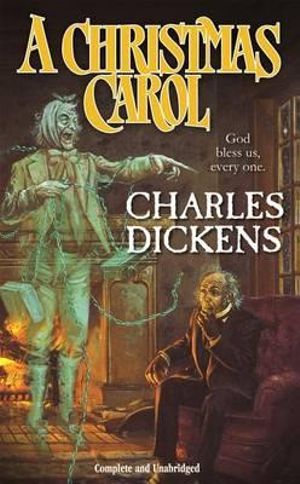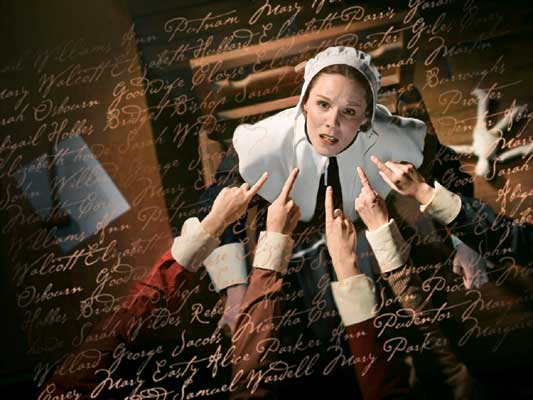
This Resource is for students studying Mainstream English, The Secret River by Kate Grenville in the Victorian Curriculum.
All pages numbers referenced in this brief analysis are taken from the 2013 edition of The Secret River by The Text Publishing Company (front cover shown above).
Genre and Historical Setting of The Secret River
The Secret River is a historical fiction novel with the characters’ stories told within the larger context of the social, cultural and political surroundings of the early colonial settlement of NSW from 1806 onwards.
Each of the 3 landscapes in the text traces protagonist William Thornhill’s life from London, Sydney and Thornhill’s Place and the different kinds of conflict that arise.
The narrative is a story of colonisation, identity and the relationships between settlers, the land and the Aborigines – it’s a story of belonging, ownership and ultimately the bloodshed that results when a people is displaced. In The Secret River, the land represents money and a future for the characters of English descent which contrasts sharply with its meaning for the Indigenous Australian characters. For the Indigenous Australians the land represents their capacity to survive in the present, their future and their past.
The setting of colonial NSW becomes important to the main characters that are caught up in the historical narrative of the settlement and conflict. It is from Part 2 ‘Sydney’ to Part 6 ‘The Secret River’ that we witness the most obvious conflict between the Indigenous Australians and the white characters. It is in this colonial setting of NSW that we see William Thornhill’s inner conflict through the complexities and challenges he faces and the extent to which conflict is all consuming.
Structure of The Secret River
Grenville adopts a traditional realist structure and framework of the narrative which is strictly chronological. The novel is broadly divided into three main sections: those that deal with the characters’ experiences in London, Sydney and Thornhill’s Point.
Prologue: ‘Strangers’ = William Thornhills first encounter with Indigenous Australians
Part 1: ‘London’ = William and Sally’s earliest life in London
Part 2: ‘Sydney’ = Transportation to Sydney, colonial settlement in NSW 1806
Part 3: ‘A Clearing in the Forest’ = The Thornhills move from Sydney to settle Thornhills Point
Part 4: ‘A Hundred Acres’ = Potential for violent conflict with the Indigenous Australians becomes increasingly prominent as the settlers realise the Aborigines are not leaving the land.
Part 5: ‘Drawing a Line’ = The conflict between the settlers and the Indigenous Australians reaches the point where the Governor issues a proclamation that the settlers should shoot the black natives.
Part 6: ‘The Secret River’ = The incidents of theft and violence between settlers and Indigenous Australians climaxes in the poisoning at Darkey Creek and culminating in the massacre at Blackwood’s place.
Epilogue” ‘Thornhill’s Place’ = The epilogue is set 10 years after the massacre and it is pervaded by a sense of remorse by William Thornhill.
Relationship between Conflicts of Space, Place & Identity
The novel has important conflicts of space, place and identity and the relationship between the three which allows distinct comparisons to be made. It is also important to note that intrinsic to these ideas is the notion of culture, especially the cross-cultural conflict that Grenville is primarily concerned with. The division of the novel into these sections is clearly differentiated by location which is an important reminder that place is a significant factor in this text. The structure of the novel also reminds us of another important theme – the importance of a sense of belonging.
Language and Dialogue of The Secret River
Grenville’s prose is designed to complement the historical setting with her characters adopting some phrases and words from the settings both in England and Australia. Instead of using quotation marks for dialogue, Grenville uses italics so that her characters speak within the text instead of traditional line breaks. Some of the terminology that Grenville uses was common to the era and often reminds the reader of the cultural background of the characters.
It is an interesting point with the dialogue that Grenville chooses not to use any Aboriginal languages in The Secret River. Unlike her other novel The Lieutenant where interactions with Aboriginal characters were given in traditional Indigenous language of the Eora people, The Secret River is spoken through William Thornhill in English. Therefore the focus is on Thornhill’s point of view and readers have no real access to the understandings and perspective of the Indigenous Australians in this text.
A significant distinguishing factor between the white settlers and the Indigenous Australians is not just in the lack of dialogue for the Aboriginals but their lack of names. William Thornhill is given his surname as his identity but the Indigenous Australians are named by their appearance “old grey beard” and “the younger one”. The difference in ways of naming highlights the ignorance of the English characters as well as allowing them to be detached from the characters that they are harming.
The Significance of the Title
The title could mean symbolically a river that has held secrets or aspects of Australia’s history hidden. It could also refer to undercurrents in personal relationships. The actual river is the Hawkesbury north of Sydney where Broken Bay hides the entrance and is the ‘secret river’ where William Thornhill finds his land.
Themes, Issues and Ideas in The Secret River
- Home and Belonging = are constant themes from Thornhill’s childhood in London to his old age in NSW. The need for a home and a sense of belonging are universal in the text implying that the values of love and personal identity are universal human values. Through his love for the land Thornhill develops his own identity as “something of a king” (p.314) – a man with a home to which he can belong and in which in turn belongs to him.
- Ownership = what defines ownership is a major theme in this novel. It is actually the question of ownership that lies at the bottom of the conflict between the settlers and the Australian natives. The English believed that by “marking” a piece of property with a crop they made it theirs. The natives, on the other hand, had free rein of the land for decades before Australia was claimed for England. They saw the settlers as taking over land that had been theirs for centuries.
- Conflict = this theme is developed in a variety of forms as between racial groups, between individuals, within families, between beliefs and actions, between dreams/aspirations and reality and between differing philosophies.
- Guilt = Despite all his success, Thornhill began to feel a sense of unforgiving guilt for his treatment of the natives. He is considered the richest man in the area, a dream desired since he was a child in poverty. Yet his accomplishment came at a cost, for his family and himself. He no longer spoke to Dick and his relationship with Sal grew apart. Furthermore, Thornhill’s unresolved conflict with the natives is conveyed through his encounter with Long Jack. He and Sal offer Jack help with food, clothes and utensils in hope of reconciliation between the two. Jack slapped his hand on the ground and declared “This me, he said. My place” (p.329). In the end Jack ‘‘… never put on the britches or the jacket … the clothes lay out in all weathers decaying into the dirt” (p. 328). The exaggeration of time interpreted through the words ‘never’ and ‘decaying’ forebodes that the time for reconciliation has yet to come for Thornhill.
- Clash of Cultures = the clash of civilizations that began when Captain Cook first stepped foot on the land that become known as Australia. Throughout the novel, Grenville juxtaposes British and Aboriginal understandings of several important social concepts: personal property, clothing, hunting and farming, family relationships, and relationship to the natural environment. The incomprehension with which each culture regards the other leads to the majority of conflicts in the novel. The British concepts of private property and settlement, backed up by the guns and might of the Empire, eventually win the battle between the two civilizations.
- Aboriginal Culture = Grenville presents Aboriginal culture as a lost idyll. Although the novel focuses on William’s journey from the gutters of London to Australian gentry, Grenville places almost equal weight on the Aborigines and their way of life. She is careful to refute the label of savage that the settlers give to the Aborigines. Grenville conveys the richness of their culture and their deep attachment to the land. She contrasts the over-consumption of Western civilization with the Aborigines’ understanding of the delicate balance of nature. Grenville suggests that the white settlers could have learned much from the Aborigines and, by extension, that the modern world with its disregard for the natural environment should open its eyes to the wisdom of native peoples.
- Social Hierarchy = the theme of social hierarchy and its levels of power runs throughout the novel. Beginning with William’s first visit to Christ Church through to the placement of the stone lions on the gateposts of Thorhnhill’s Point, Grenville explores the impact of social ranking on individual development. The humiliation that William experiences as a waterman in London marks his character for life and informs the choices he makes throughout the novel. He craves the thrill of wielding power over another person. For William and the other settlers (the majority of whom are convicts), their status as white men gives them permission to look down on other human beings (the Aborigines), for the first time in their lives. Their treatment of the Aborigines is informed by their understanding of how one should treat a racial and social inferior.
- Self Creation = the story of modern Australia is essentially a story of self-creation. The convicts sent from England were given the chance to receive a full pardon and start their lives over. The Secret River tells the story of William Thornhill one of those first settlers who arrived in New South Wales as a convict and an outcast and who eventually carved out a place for himself in Australia’s incipient ruling class. The structure of the novel reflects the importance of this theme. Grenville opens the novel not with William’s youth in London but with his first night in New South Wales. She ends the novel with William sitting on the veranda of his grand house, Cobham Hall. He has re-written the story of his life both physically and metaphorically.
- The British Class System = The Secret River examines how the harsh British class system of the 18th and 19th centuries condemned people like William to a life of crime. Grenville exposes the harsh choices that people of William’s class faced in order to survive. It was not a question of good or bad but of starvation or theft. In her chronicle of William’s life in London, Grenville wants the reader to understand that the convicts who first settled modern Australia were not bad, just desperate. Australia has chaffed under its moniker as a land of convicts since its inception. Grenville’s empathetic account of William’s life represents an attempt to embrace Australia’s convict past and give it a human face.
- The Disorientation of the Immigrant = through the character of Sal, Grenville explores the disorientating experience of the immigrant. While she works hard and rarely complains, Sal has a difficult time settling in to their new life in Australia. The very trees with their greyish leaves tell her she is no longer at home. Sal feels the wild continent pressing in on her from all sides, and she misses the smells and sounds of London. While William thrives in the new land, Sal finds it harder to adjust because she did not suffer the same level of humiliation as William. Sal clings on to her memories of Britain, recreating her life in London as much as possible. Grenville uses Sal to explore the persistence of British culture in Australia and the lingering concept that Britain was ‘Home’.
- Fate vs Free Will = at first the poor life in London disempowers Thornwill but as he gets older he sees things happen to him independently of his choices. Ending up in NSW he tends to base his behaviour more on the idea of fate.
- Alternate Path of Australia’s Development = Grenville sets up two paths to the development of Australia, embodied in the characters of Smasher Sullivan and Thomas Blackwood. Smasher Sullivan represents the path of racial, social, and physical domination of the Aborigines that the British did follow in their colonization of Australia. Thomas Blackwood, on the other hand, represents the choice of peaceful co-existence that was originally available to the British colonists if they had not been blinded by racial prejudice and greed. Grenville gives the reader a glimpse of the possible development of future generations of Australians through the character of Dick Thornhill.
‘Guilt’ in Grenville’s Trilogy
Grenville’s The Secret River (in 2005) was the first in a trilogy: it was followed by The Lieutenant (in 2008), and Sarah Thornhill (in 2011). The theme of all three novels is guilt—the guilt of white Australia at its treatment of Aboriginal people. Guilt poisons William Thornhill’s life, and that of his daughter, Sarah Thornhill. In The Lieutenant, Daniel Rooke, based on the historical William Dawes, avoids guilt only by disavowing (to his face) the governor’s orders to capture and kill six of the local Cadigal people.
The Message of The Secret River – It’s Relevance in Australia Today
On first reading the text focus of The Secret River is its exploration of the conflict between convict William Thornhill and the local Dharug people – whose land he tries to settle on. But on closer examination it seeks to make a deeper point, about the relationship of Australians to the past – in this case to the Aboriginal people who were here so long before us. The climactic event of The Secret River, a massacre of Aborigines on the Hawkesbury River that, in the book’s chronology, is placed at some point around 1814, is intended to place readers in the reality of a situation that we know happened in many places in Australia’s early history.
Actress Ningali Lawford-Wolf explained that “This country has a black history and how they came to be here was through massacres”. Director Neil Armfield of The Sydney Theatre Company said that the tale of racial divides are, in many ways, still present today. “That’s the contradictory reality that we’re still living, that actually all First Nation people are dealing with – that there are two different notions of possession” Mr Armfield said. Trevor Jamieson, a renowned Aboriginal actor, explained there are vivid similarities between past issues and those bubbling today. Adapting the text for the stage as a play, writer Andrew Bovell, said “I don’t think we can understand who we are as a people, unless we understand who we were”.
Comparisons with The Secret River and Joseph Conrad’s Heart of Darkness
It seems obvious that Grenville drew heavily on Joseph Conrad’s Heart of Darkness when she developed her protagonist William Thornhill in The Secret River. In Heart of Darkness, protagonist Marlow acts as an impartial observer of the effects of the ivory trade in Africa. His journey into the heart of Africa reflects his symbolic discover of his own self and human nature. In effect Marlow sees the ‘heart of darkness’ (greed and evil) found in all men and suppresses this urge but others like Kurtz succumb to them.
When Marlow discovers Kurtz he has become so ruthless and greedy that even the other managers are shocked. He refers to the ivory as his own and sets himself up as a primitive god to the natives. He has written a seventeen-page document on the suppression of savage customs, to be disseminated in Europe, but his supposed desire to “civilize” the natives is strikingly contradicted by his postscript, “Exterminate all the brutes!” Marlow is careful to tell his listeners that there was something wrong with Kurtz, some flaw in his character that made him go insane in the isolation of the Inner Station. But the obvious implication of Marlow’s story is that the humanitarian ideals and sentiments justifying imperialism are empty, and are merely rationalizations for exploitation and extortion.
Similarly, in The Secret River, William Thornhill battles with his own conscience when facing challenges to decide on the ‘right’ course of action. When faced with the poisoning of an entire camp of Aboriginal people at Darkey Creek culminating in the massacre of the Aborigines at Blackwood’s place, William weighs up his own safety and Sal’s happiness against his dislike for Smasher and his methods.
At the end of the novel William still feels regret at his involvement in the massacre so that readers gain the feeling that there is no satisfactory and lasting resolution to the conflict. In this last section of the novel titled ‘Thornhill’s Place’ it is bitterly ironic as no amount of clearing, building, fencing, planting and killing of Aborigines will ever see Thornhill at peace with his surroundings. Sitting on the bench at Cobham Hall where he could overlook all his wealth Thornhill felt that “… should have been the reward. He could not understand why it did not feel like triumph” (p.334).
Both Texts Question “Who owns what?”
Both authors, Grenville and Conrad, highlight the controversy between the imperialistic attitudes of the English towards the natives in terms of possession of land with the same question “Who owns what?” In Heart of Darkness British colonists saw no reason not to take land and resources in Africa that had not been claimed by either public or private ownership. In The Secret River the white settlers were quite clear on the concept of “who owned what” in NSW: “There were no signs that the blacks felt the place belonged to them. They had no fences that said this is mine. No house that said, this is our home. There were no fields or flocks that said, we have put the labour of our hands into this place” (p.93). It was only Blackwood, a man of compromise who warned Thornhill against ‘taking up’ the land he obviously coveted. Living in apparent harmony with the Aborigines, Blackwood advised Thornhill from the outset “When you take a little, bear in mind you got to give a little” (p.169).
This Resources is created by englishtutorlessons with Online Tutoring of English using Zoom





 For Mainstream English Year 12 students studying the novel
For Mainstream English Year 12 students studying the novel 


